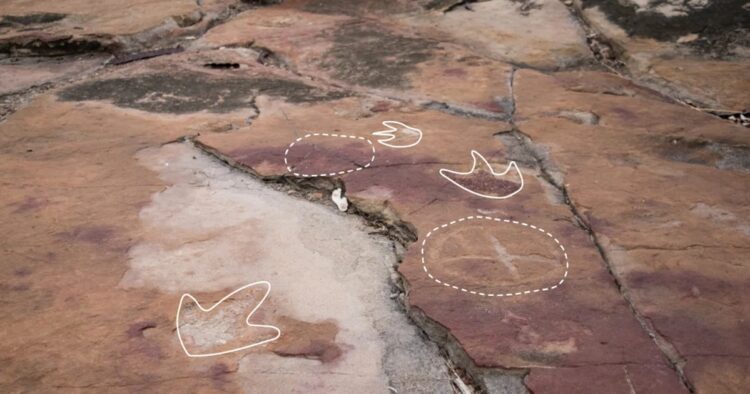In Brazil prehistoric humans carved drawings in the rock next to dinosaur footprints, which suggest that they might have found them meaningful, according to the new study.
Archaeologists call rock carvings petroglyphs and are at a site called Serrote do Letreiro in Paraíba, an agricultural state on the eastern tip of Brazil.
Researchers first observed the marks in 1975. But they are now termed as relating to the footprints following recent field surveys aided by drones, which uncovered previously unseen carvings.
The tracks are associated to dinosaurs from the Cretaceous Period, which ended 66 million years ago.
‘People usually think that Indigenous people weren’t aware of their surroundings’, said study coauthor Leonardo Troiano, an archaeologist at the Institute of National Historic and Artistic Heritage in Brasilia.
‘But that’s not true and it’s very clear that they were interested in the footprints. We’ll never know if they knew about dinosaurs, but it is clear that they were curious about the prints and thought they were meaningful in some way’, he added.
The Serrote do Letreiro petroglyphs aren’t the first examples of rock art found close to dinosaur prints. The authors of the study said they believe that the unprecedented clarity of the association between the two at this specific site could have implications across paleontology, archaeology and cultural heritage studies.

















Comments